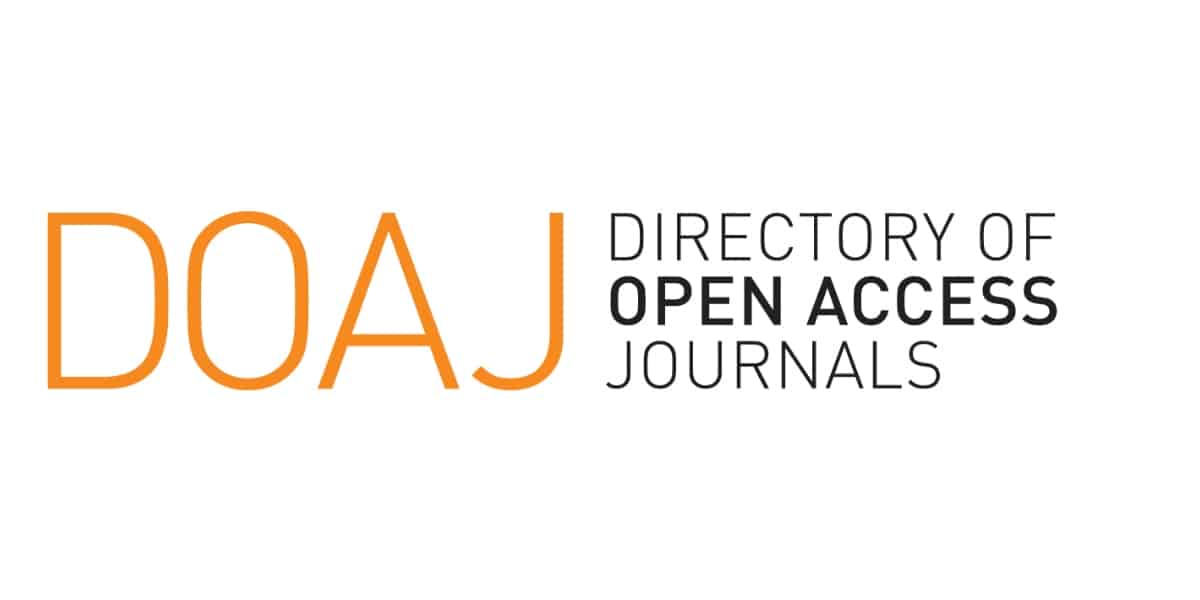Correlation Analysis Of PM10 With Tropospheric Ozone (O3) During Forest And Land Fire Event In Sumatera
Keywords:
Air pollution, Pearson correlation, PM10, Tropospheric ozone.Abstract
Indonesia has a forest area of 120,495,702.96 hectares which is vital for human survival. However, significant forest fires, such as those in 1997/1998 and 2015, have caused widespread damage and impacted neighboring countries. These forest fires contribute to an increase in tropospheric ozone (O3) concentrations which are dangerous for human health. This study aims to evaluate the correlation between PM10 and tropospheric ozone in Sumatra during forest fires, using data from the Bukit Kototabang Global Atmospheric Monitoring Station. The analysis method involves measuring PM10 and O3 concentrations using the BAM1020 and Ozone Analyzer Model 49 I, as well as Pearson correlation and linear regression analysis. Results show that there is a positive correlation (r = 0.53) between PM10 and tropospheric ozone, with PM10 increasing as O3 concentrations increase during extreme conditions. The average monthly concentrations of PM10 and O3 during 2016-2020 were 21.75 µg/m3 and 11.61 ppb respectively, with peak concentrations of PM10 in September and O3 in February. Increases in PM10 during forest fires contribute to increases in ozone precursors and photochemical processes, accelerating the formation of tropospheric ozone.
References
[1] A. Yusuf, H. Hapsoh, S. H. Siregar, and D. R. Nurrochmat, “Analisis Kebakaran Hutan Dan Lahan Di Provinsi Riau,” Dinamika Lingkungan Indonesia, vol. 6, no. 2, p. 67, 2019, doi: 10.31258/dli.6.2.p.67-84.
[2] T. Nishanth, K. M. Praseed, M. K. S. Kumar, and K. T. Valsaraj, “Influence of ozone precursors and PM10 on the variation of surface O3 over Kannur, India,” Atmos Res, vol. 138, no. March, pp. 112–124, 2014, doi: 10.1016/j.atmosres.2013.10.022.
[3] Indra, Kamarubayana, Legowo, Kirtaamiana, and M. Taufan, “Studi Kebakaran Hutan Tahun 2015–2019 Berdasarkan Aplikasi Sipongi Menggunakan Citra Satelit Noaa Di Provinsi Kalimantan Timur. Jakt: Jurnal Agroteknologi dan Kehutanan Tropika,” Jurnal Agroteknologi dan Kehutanan Tropika, vol. 2, no. 1, pp. 47–70, 2024, [Online]. Available: http://ejurnal.untag-smd.ac.id/index.php/JAKT/article/view/7166%0Ahttp://ejurnal.untag-smd.ac.id/index.php/JAKT/article/download/7166/6505
[4] N. Bilqis, “Analisis Dampak Kasus Kebakaran Hutan di Indonesia terhadap Hubungan Diplomatik Indonesia dengan Malaysia dan Singapura,” Gorontalo Journal of Government and Political Studies, vol. 3, no. 2, p. 055, 2020, doi: 10.32662/gjgops.v3i2.1123.
[5] D. Ramadhani, N. B. Simatupang, S. Rahmah, and Andhika Natawijaya, “Identifikasi Kerawanan Kebakaran Hutan di Provinsi Riau,” Jurnal Sains Geografi, vol. 1, no. 1, pp. 72–87, 2023, doi: 10.2210/jsg.vx1ix.xxx.
[6] L. J. R., Kamurnian Tafonao, Artha Lumban Tobing, “GOVERNANCE : Jurnal Ilmiah Kajian Politik Lokal dan Pembangunan,” Elvandar, vol. 9, no. 4, pp. 100–104, 2023.
[7] A. C. Nahas, “Kondisi Kualitas Udara Bukit Kototabang Periode 2005-2010,” Megasains, no. 0, pp. 1–23, 2016.
[8] L. Zhang et al., “Ozone-CO correlations determined by the TES satellite instrument in continental outflow regions,” Geophys Res Lett, vol. 33, no. 18, pp. 2–6, 2006, doi: 10.1029/2006GL026399.
[9] G. A. Munggaran, H. Kusnoputranto, and J. Ariyanto, “Korelasi Polusi Udara dengan Insiden Pneumonia Balita di DKI Jakarta pada Tahun 2017-2020,” vol. 7, no. 1, pp. 123–135, 2024.
[10] H. Han, J. Liu, L. Shu, T. Wang, and H. Yuan, “Local and synoptic meteorological influences on daily variability in summertime surface ozone in eastern China,” Atmos Chem Phys, vol. 20, no. 1, pp. 203–222, 2020, doi: 10.5194/acp-20-203-2020.
[11] M. Jerrett et al., “Long-Term Ozone Exposure and Mortality,” Pediatr Neurol. 2013 October ; 49(4): 243–254, vol. 49, no. 4, pp. 243–254, 2013, doi: 10.1056/NEJMoa0803894.Long-Term.
[12] M. Jia et al., “Inverse Relations of PM2.5 and O3 in air compound pollution between cold and hot seasons over an urban area of East China,” Atmosphere (Basel), vol. 8, no. 3, pp. 1–12, 2017, doi: 10.3390/atmos8030059.
[13] A. Kurniawan, “Pengukuran Parameter Kualitas Udara (Co, No2, So2, O3 Dan Pm10) Di Bukit Kototabang Berbasis Ispu,” Jurnal Teknosains, vol. 7, no. 1, p. 1, 2018, doi: 10.22146/teknosains.34658.
[14] M. K. Alim and D. B. Arianto, “Analisis Korelasi Antara Faktor Ekonomi dan Distribusi Penduduk di Jawa Timur Tahun 2022 Menggunakan Metode Korelasi Pearson,” Kohesi: Jurnal Multidisiplin Saintek, vol. 1, no. 4, pp. 20–30, 2023.
[15] K. Qu et al., “The effect of cross-regional transport on ozone and particulate matter pollution in China: A review of methodology and current knowledge.” 2024. doi: https://doi.org/10.1016/j.scitotenv.2024.174196.
[16] Z. Oktaviani and M. A. S. Jawwad, “Rencana Pengelolaan dan Pemantauan Kualitas Udara Terhadap Rencana Kegiatan Pembangunan Permukiman,” Environmental Science and Engineering Conference, vol. 4, no. 1, pp. 154–159, 2023.
[17] N. P. I. Wikandari, H. Harsa, A. F. Assomadi, and R. Boedisantoso, “Penentuan Korelasi Perubahan Kecepatan Angin Dan Kekuatan Radiasi Terhadap Ketinggian Lapisan Inversi Dan Hubungannya Dengan Kualitas Udara Ambien Kota Surabaya,” Jurnal Teknik Its, vol. 4, no. 1, p. 64, 2015, [Online]. Available: http://repository.its.ac.id/59909/
[18] Y. W. Millenia, M. Helmi, and L. Maslukah, “Analisis Mekanisme Pengaruh IOD, ENSO dan Monsun terhadap Suhu Permukaan Laut dan Curah Hujan di Perairan Kepulauan Mentawai, Sumatera Barat,” Indonesian Journal of Oceanography, vol. 4, no. 4, pp. 87–98, 2023, doi: 10.14710/ijoce.v4i4.14414.
[19] Endarwati, “Identifikasi areal bekas kebakaran hutan dan lahan menggunakan analisis otomatis citra satelit landsat,” seminar nasional geomatika, p. 273, 2017.
[20] A. B. Raharja and Kadarsah, “Pengaruh indeks monsun Indonesia terhadap curah hujan di Sumatera Selatan,” Seminar Sains Atmosfer, vol. 3, no. November, pp. 8–18, 2014, [Online]. Available: https://www.researchgate.net/publication/335401596_Pengaruh_Indeks_Monsun_Indonesia_terhadap_Curah_Hujan_di_Sumatera_Selatan
[21] D. W. Masdat, Y. S. Putra, and R. Adriat, “Keterkaitan Karbon Monoksida (CO) Terhadap Ozon Permukaan (O3) Di Wilayah Kalimantan Barat,” Prisma Fisika, vol. 10, no. 3, p. 251, 2023, doi: 10.26418/pf.v10i3.57853.
[22] F. A. Maslakah and Bu. Setiawan, “pengaruh radiasi matahari ,nitrogen dioksida dan metana pada ozon troposferik di bukit kototabang,” Angewandte Chemie International Edition, 6(11), 951–952., vol. 1, no. April, 2009.
[23] J. Gao et al., “Effects of black carbon and boundary layer interaction on surface ozone in Nanjing, China,” Atmos Chem Phys, vol. 18, no. 10, pp. 7081–7094, 2018, doi: 10.5194/acp-18-7081-2018.
[24] G. Zhang et al., “Identifying the O3 chemical regime inferred from the weekly pattern of atmospheric O3, CO, NOx, and PM10: Five-year observations at a center urban site in Shanghai, China,” Science of the Total Environment, vol. 888, no. x, p. 164079, 2023, doi: 10.1016/j.scitotenv.2023.164079.
[25] A. Krisanti dan, P. Lestari, and P. Studi Teknik Lingkungan, “Measurement of Pm10 and Black Carbon Concentration Emitted By Smoke From Peat Land and Forest Fire in Desa Pekanheran, Kabupaten Indragiri Hulu, Provinsi Riau,” Jurnal Teknik Lingkungan, vol. 17, no. April, pp. 100–111, 2011.
[26] G. He et al., “Characteristics of boundary layer ozone and its effect on surface ozone concentration in Shenzhen, China: A case study,” Science of the Total Environment, vol. 791, p. 148044, 2021, doi: 10.1016/j.scitotenv.2021.148044.
Downloads
Published
Issue
Section
License
Copyright (c) 2024 Ade Ayu Oktaviana, Alvin Pratama, Ikhsan Buyung Arifin, Joni Hermana (Author)

This work is licensed under a Creative Commons Attribution 4.0 International License.
















